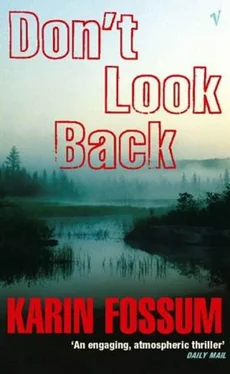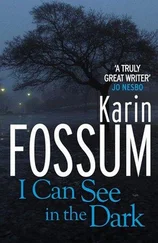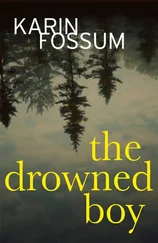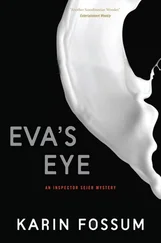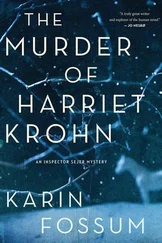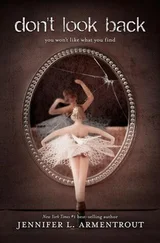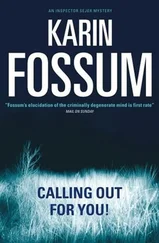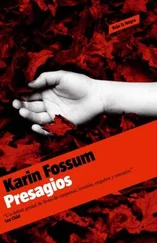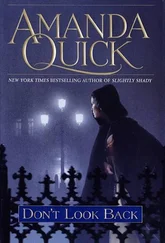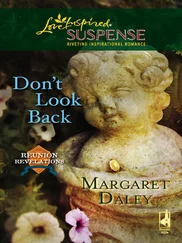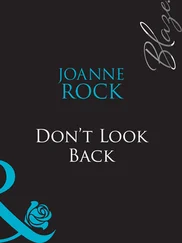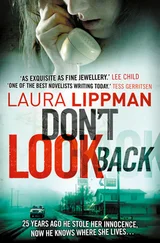Sejer nodded and leant forward. "You've seen her boyfriend. He has a motorcycle. Could it have been him?"
Now Johnas frowned as if on his guard. "I've seen him walk past in the street, from a distance. But this person was a long way off, wearing a helmet. I can't say whether it was him. I don't even want to suggest that."
"Not that it was him." Sejer's eyes narrowed. "Just that it might have been him. You say he was young. Was he of slight build?"
"That's not easy to tell when a person's wearing leathers," he said.
"But why did you assume he was young?"
"Oh," he said in confusion, "what can I say? I suppose I made that assumption because Annie's young. Or maybe there was something about the way he was sitting." He looked embarrassed. "I didn't know that it was going to turn out to be so important."
He got up and knelt down by the dog. "You have to try and understand what it's like living in this place," he said, upset. "Rumours spread fast. And besides, I can't believe that her boyfriend would do anything like that. He's just a boy, and they'd been together for a long time."
"Leave the judgements to us," Sejer said. "That motorcycle is important, of course, and another witness saw it too. If he's innocent he won't be convicted."
"Is that right?" Johnas said, doubtfully. "No, but it's bad enough being a suspect, I would think. If I say that he looked like her boyfriend, then I'm sure you're going to put him through hell. And the truth is that I have no idea who it was."
He shook his head sharply. "All I saw was someone wearing a leather outfit and a helmet. It could have been anybody. I have a 17-year-old son; it could have been him. I wouldn't have recognised him in that get-up. See what I mean?"
"Yes, I see," Sejer said. "You've answered my question anyway. It could have been him. And when it comes to that hell you mentioned, he's probably in it already."
Johnas swallowed hard.
"What did you and Annie talk about in the car?"
"She didn't say much. I passed the time talking about Hera and her pups."
"Did she seem anxious or nervous about anything?"
"Not at all. She was the same as always."
Sejer looked around the living room and noticed that it was sparsely furnished, as if he hadn't finished decorating. But there were plenty of carpets, both on the floor and on the walls, big Oriental carpets that looked expensive. Two photographs hung on the wall; one was of a tow-headed boy about two years old, the other was of a teenager.
"Are those your sons?" Sejer pointed, to change the subject.
"Yes," he said. "But not recent photographs."
He went back to petting the dog, stroking her black, silky-soft ears and damp snout.
"I live alone now," he added. "Finally found myself an apartment in town, on Oscarsgaten. This place is too big for me. I haven't seen much of Annie lately. I think she was a little upset when my wife left. And there weren't kids to take care of any more."
"And you sell Oriental carpets?"
"I deal mostly with Turkey and Pakistan. Occasionally Iran, but they tend to hike the prices. I take a trip to southern Europe a couple of times a year and stay for several weeks. Take my time. People there are getting to know me," he said with satisfaction. "I've made some good contacts. That's the important thing, you know, to develop a relationship of trust. They've had rather mixed experiences with the West."
Skarre manoeuvred his way past the coffee table and went over to the far wall which was almost entirely covered by a large carpet, from floor to ceiling.
"That one's a Turkish Smyrna," Johnas said. "One of the most beautiful ones I own. I really can't afford to have it. Two and a half million knots. Incomprehensible, isn't it?"
Skarre looked at the carpet. "Is it true that they're made by children?" he asked.
"Often, yes, but not mine. It's bad for the reputation of the business. You may not like it, but the fact is that children make the finest carpets. Grown-up fingers are too thick."
They stood gazing at the carpet, at all the geometric shapes, one inside the other, getting smaller and smaller, an almost endless number of nuances in colour.
"Is it true that the children are chained to the looms?" Sejer said.
Johnas shook his head, resigned.
"It sounds appalling when you put it that way. The children with weaving jobs are the lucky ones. A good weaver has food and clothing and warmth. He has a life. If they are chained to the looms, it's at the behest of their parents. Often a young weaver supports a whole family of five or six people. He saves his mother and sisters from prostitution, and his father and brothers from becoming beggars or thieves."
"I've heard it just postpones things," Sejer said. "By the time they grow up and their fingers are too thick, they're often blind or have weak eyes from labouring over a loom. They can't work at all, and so they end up being beggars just the same."
Johnas smiled "You've been watching too much TV. You should go there yourself. The weavers are happy little people, and they enjoy great respect among the populace. It's that simple. But we have to help the rich maintain their moral standards; no one is more sensitive than they are when it comes to things like this. That's why I avoid child labour. If you ever want to buy a carpet, come over to Cappelens Gaten," he said eagerly. "I'll see you get a good deal."
"I doubt it's within my price range."
"Why is it discoloured?" Skarre asked.
Johnas had to smile a bit at such complete ignorance; at the same time he livened up, as if talking about his great passion was like a puff of air on a dying ember. His enthusiasm swelled. "It's a nomad carpet."
That didn't tell Skarre anything at all.
"The nomads are always on the move, right? It might take them a year to make such a large carpet. And they dye the wool using plants, which they have to gather during different seasons, in shifting terrain, in varying conditions. This blue here," he said, pointing at the carpet, "is from the indigo plant. And the red is from the madder plant. But inside the hexagon there's a different red that is made from crushed insects. This orange colour is henna, the yellow is saffron."
He placed his hand on the carpet and stroked downward. "This is a Turkish rug, made with Gordian knots. Every square centimetre has approximately a hundred knots."
"Who designs the patterns?"
"They weave them from patterns that are centuries old, and many have never even been sketched out. The old weavers walk around the workshop, singing the patterns to the younger weavers."
The old blind weavers, Sejer thought.
"Here in the West," Johnas said, "it's taken us a long time to discover this handwork. Traditionally we prefer figurative patterns, something that tells a story. That's why carpets with hunting and gardening patterns were the first to catch our attention, because they include flower and animal motifs. Personally I prefer this type. First the wide outer border that holds everything in place. Then your eye moves further and further in, until at last you come to the treasure, in a sense." He pointed to the medallion in the centre of the rug.
"Forgive me," he said all of sudden. "Here I am, rattling on about me and my interests." He looked embarrassed.
"The helmet," Skarre said, tearing himself away. "Was it a half or a whole helmet?"
"Is there such a thing as a half helmet?" Johnas asked, surprised.
"A whole helmet has a piece that fits over the jaw and cheek. An ordinary helmet covers only the skull."
"I didn't notice."
"What about the leather suit. Was it black?"
"Dark, at any rate. It didn't occur to me to study him. There's something completely normal about watching a pretty girl cross the road and head towards a guy on a motorcycle. It's as though that's the way things should be, don't you think?"
Читать дальше
